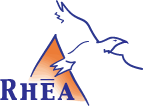
Rhea was contracted to complete a Phase II Archaeological Investigation of the site to determine the National Register of Historic Places (NRHP) eligibility. This fast-paced project required the completion of the fieldwork in under three months.
Phase II Archaeological Investigation
The federal government recently completed the Grays Landing Lock and Dam that raised the pool elevation of the Monongahela River fifteen feet within the Lower Georges Creek watershed. Prior to the pool change, many cultural resource sites were investigated, excavated, and catalogued. However, the site (36FA434) remained unresolved.
Rhea was contracted to complete a Phase II Archaeological Investigation of the site to determine the National Register of Historic Places (NRHP) eligibility. This fast-paced project required the completion of the fieldwork under three months.
Located within the flood plain of the Lower Georges Creek Watershed, Site 36FA434 was a historic property that was thought to contain a single family house of D. Hough, a 19th century New Geneva mill owner. The site now resides within the flood pool of Grays Landing Lock and Dam.
Rhea performed approximately 100 one-foot by one-foot shovel test holes across the site along a 10-meter grid pattern to obtain an overall layout of the site. 50 one-foot by one-meter square pits were dug within areas of interest discovered within the shovel pit holes. Areas of interest generally consisted of structure foundations of the house and any related out buildings. Both the shovel pits and meter squares were dug in 10-cm lifts and ended 10 cm into undisturbed natural soils. All soils were screened using a 1/4-inch screen size to locate any artifacts uncovered during the excavations. All subsurface features and artifacts were photographed in accordance with the Pennsylvania Bureau for Historic Preservation Guidelines for Archaeological Investigations.
Artifacts generally consisted of ceramics, glass, rusted metal objects, and other objects. At the conclusion of the fieldwork, all artifacts were cleaned, classified, and tabulated by count and percentage and attributed to their respective soil horizon.
A report presenting the data encountered along with the NRHP eligibility was submitted to the federal government. No further archaeological research was recommended.
Rhea quickly responded to this aggressively paced schedule by coordinating with the field crews, clearing subcontractor, and the property owner so that the field work at the site commenced the same week the Task Order was signed.
Services: Cultural Resources Management
Industries: Federal Government





